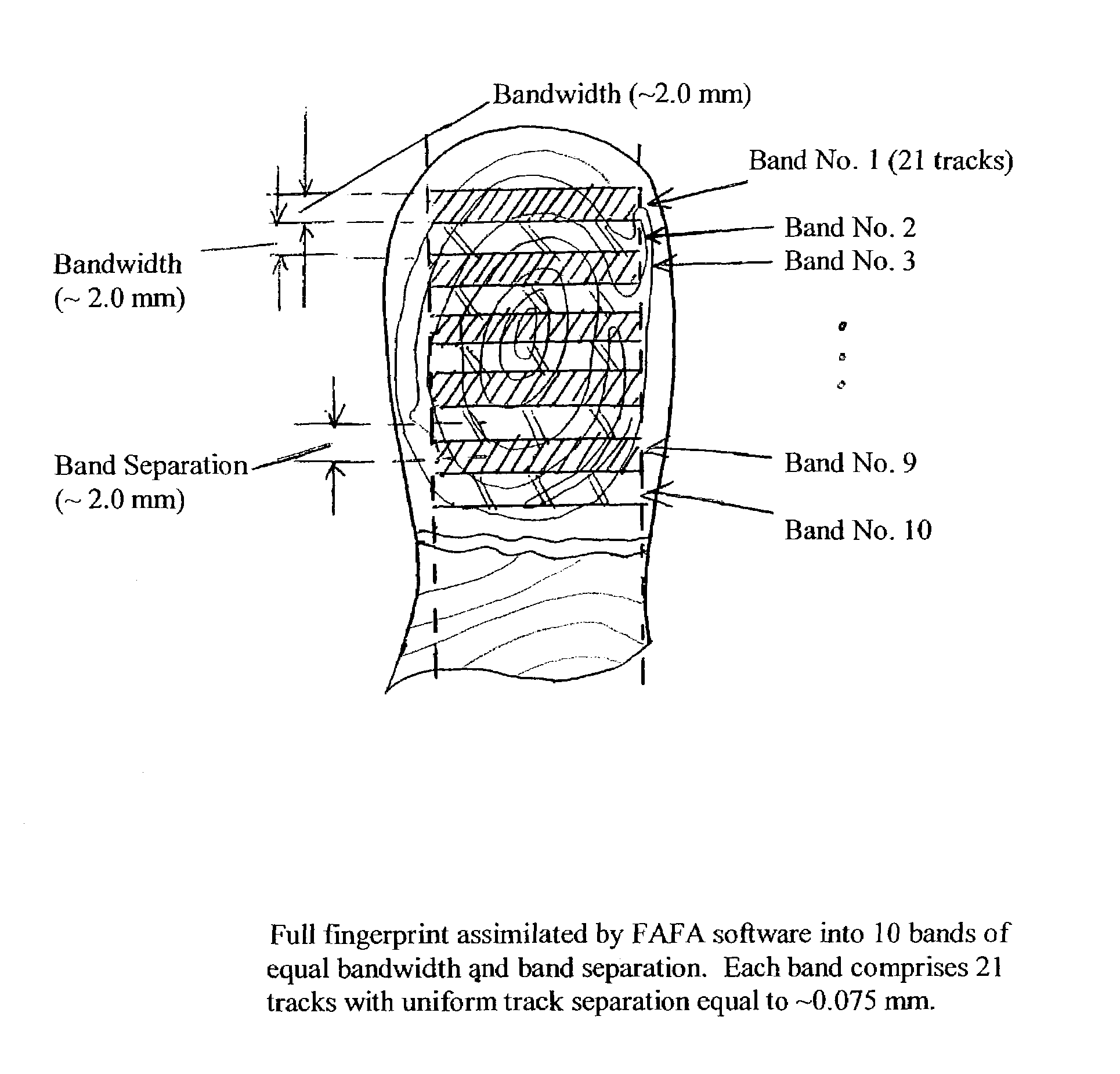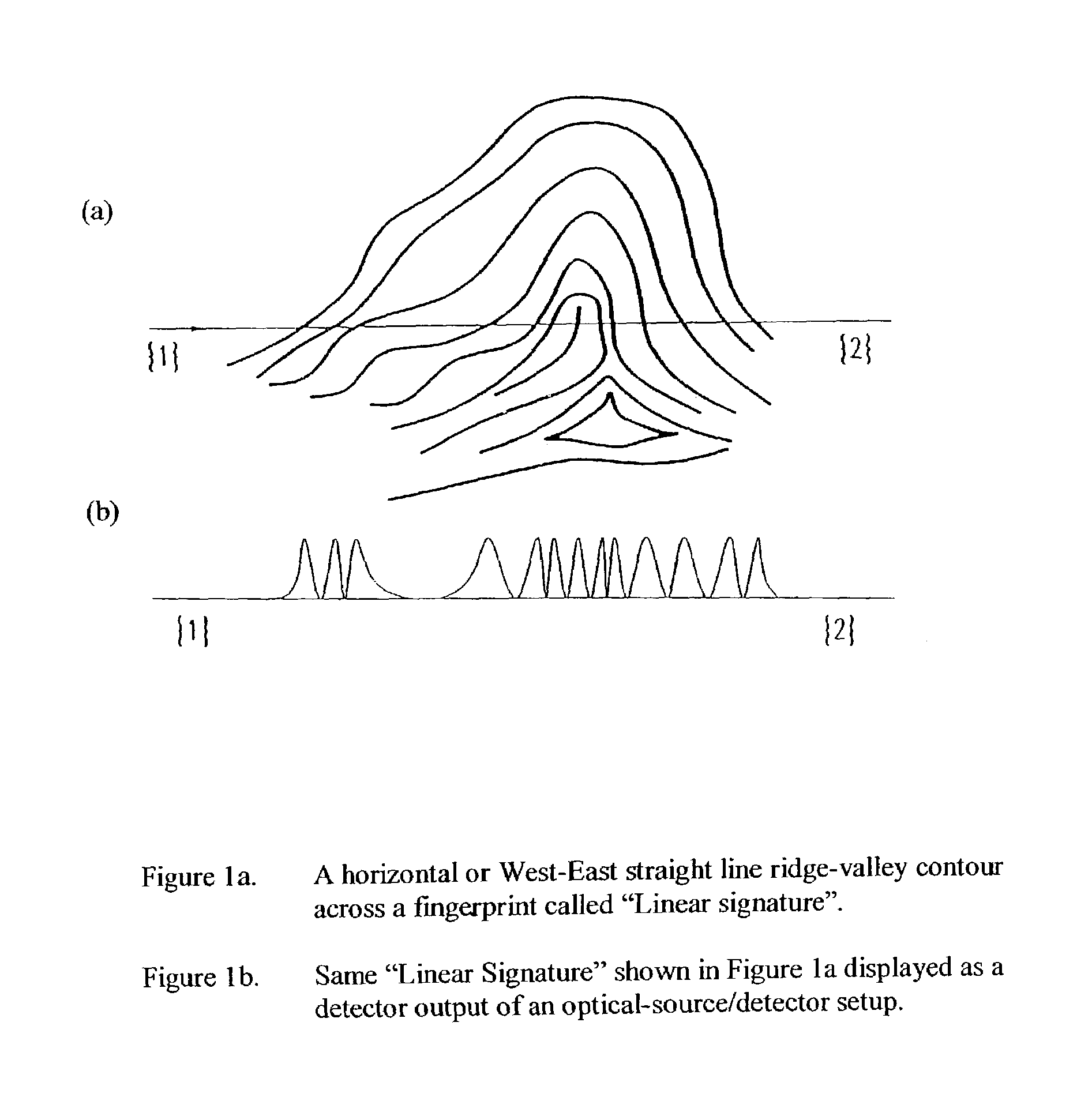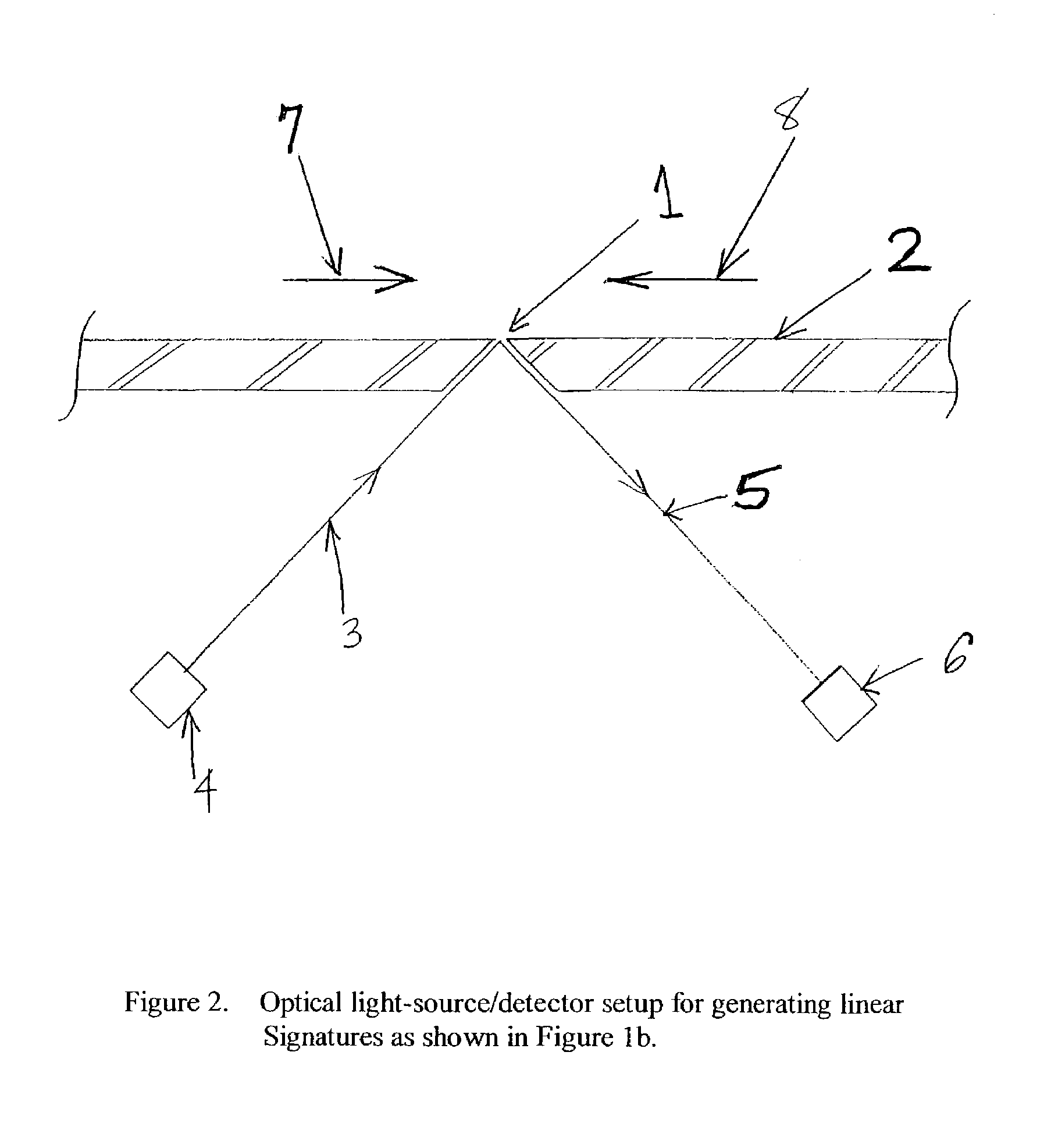Method for authenticating an individual by use of fingerprint data
a fingerprint data and authentication method technology, applied in the field of biometrics and personal identification, can solve the problems of increasing complexity, requiring additional complexity, and requiring the deployment of a single fingerprint data
- Summary
- Abstract
- Description
- Claims
- Application Information
AI Technical Summary
Benefits of technology
Problems solved by technology
Method used
Image
Examples
Embodiment Construction
[0036]A preferred embodiment of the present invention provides new methods and apparatus for verifying or authenticating the identity of individuals using only an assimilated partial fingerprint record or a subset of the fingerprint. The result is in an extremely robust and low-cost authenticating unit that alleviates the concern of privacy invasion and the threat of “gummy fingers” skimming and falsification fraud.
[0037]The present invention also provides a method for verifying or authenticating the identity of individuals using a sequence of one or more partial fingerprints (linear signatures) to be used during both enrollment and subsequent authentication. This particular sequence in which they are selected is arranged to constitute a user's PIN-like personal code.
[0038]The present invention also describes a system comprising an “Enrollment Unit (EU)” which is a modified full fingerprint reader equipped with a reference frame for accurately placing the finger and a custom-develop...
PUM
 Login to View More
Login to View More Abstract
Description
Claims
Application Information
 Login to View More
Login to View More - R&D
- Intellectual Property
- Life Sciences
- Materials
- Tech Scout
- Unparalleled Data Quality
- Higher Quality Content
- 60% Fewer Hallucinations
Browse by: Latest US Patents, China's latest patents, Technical Efficacy Thesaurus, Application Domain, Technology Topic, Popular Technical Reports.
© 2025 PatSnap. All rights reserved.Legal|Privacy policy|Modern Slavery Act Transparency Statement|Sitemap|About US| Contact US: help@patsnap.com



